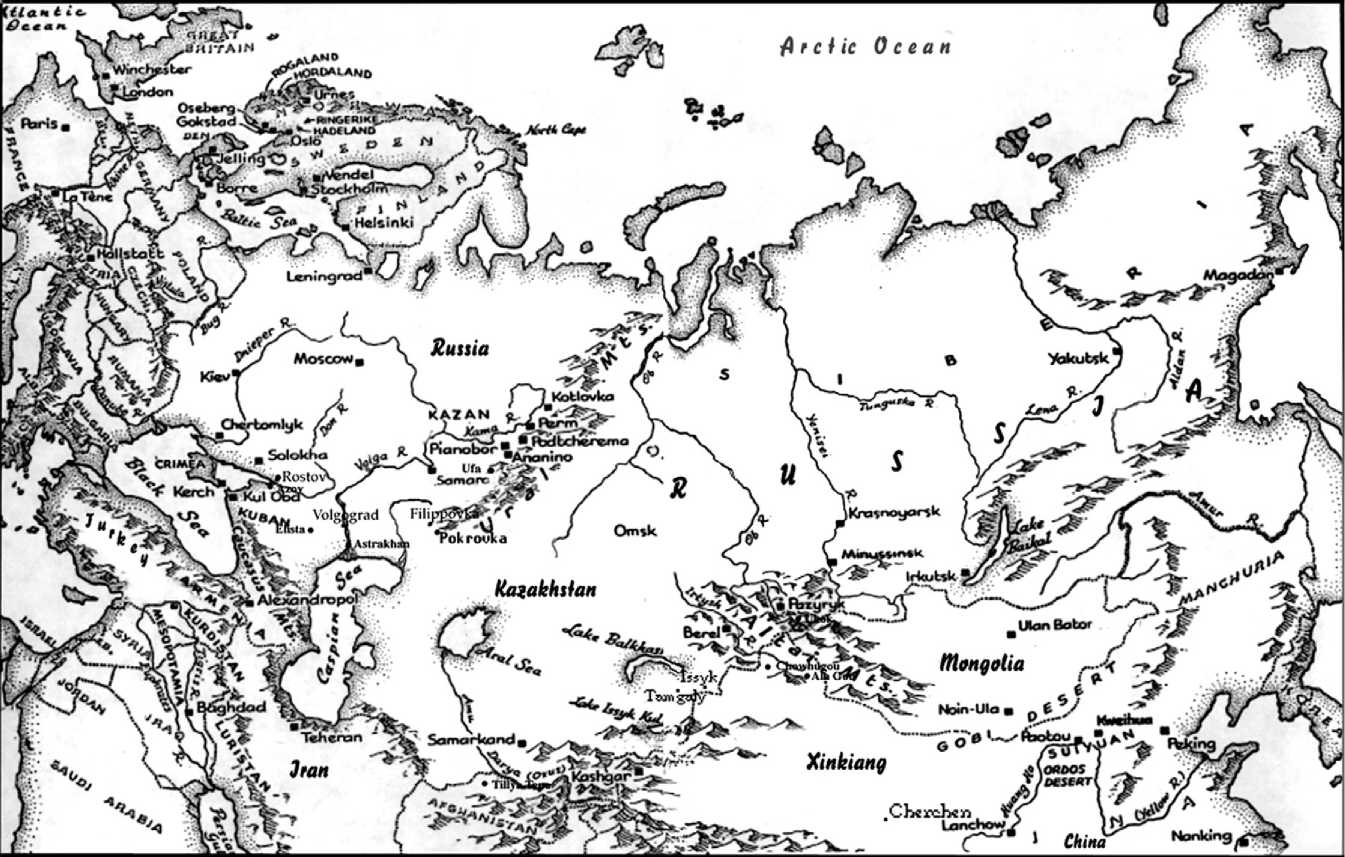Although Homo erectus appears to have evolved in Africa about 1.8 million years ago and remains dating to 1.6 million years ago have been found in Georgia, the harsh climatic conditions in the steppes, and lack of significant nutritional sources, for example, the gathering-type foodstuffs, prevented permanent incursions into the Eurasian interior until much later. The earliest evidence for human habitation is found along the southern fringes of Eurasia. Although Oldowan-type tools (c. 750 000 BP) were recorded in the Caucasus, and habitation sites dating to c. 250 000 BP were excavated in Tajikistan, during the early and middle Palaeolithic, human habitation in Eurasia was insignificant.
About 130 000 BP, Neanderthal populations, with the ability to adapt to cold climate, appeared in Europe but had disappeared by 50 000 BP although they continued to flourish in Asia until 30 000 BP. Between 90 000 and 80 000 BP, in the only relatively benign Eurasian climatic region encompassing Uzbekistan, the North Black Sea territory, and along the Dniester River, Neanderthal habitation sites have been found. Following a colder period after 65 000 BP, a second wave of Neanderthals colonized the less-hostile areas between the great Eurasian rivers and the intermountain valleys. They hunted, gathered, and most probably lived in subsistence groups. Some burials indicate a limited ritual belief system. From c. 40 000 BP climatic conditions continued to deteriorate and the Eurasian steppes no longer entertained habitation until about 20 000 BP when the first evidences of modern humans appear. This society is defined by complex housing and refined utilitarian implements as well, drilled stone, bone - and animal-teeth pendants, and art, for example, Venus figurines, cave paintings, and petroglyphs. Hunting techniques became more complex, which signaled a higher

Figure 1 Map of the Eurasian steppes.
Societal organization. Early in the Holocene Period, c. 12 000 BP, temperatures were similar to those of today, permitting postglacial communities to thrive in the southern Ural steppes where they hunted horse and elk. Emigrating from the south, sedentary fishing communities in the Volga, Dnieper, and Pontic steppes used huge nets for fishing. Such activity signals the beginnings of an organized society. Hissar Culture hunting camps, dating from the seventh to the fifth millennium BCE, were found along the base of the mountains ranges from the Amu Darya to Issyk Kul (lake). And the earliest signs of the Neolithic with the domestication of goats and sheep, appeared in caves east of the Caspian Sea.




 World History
World History









